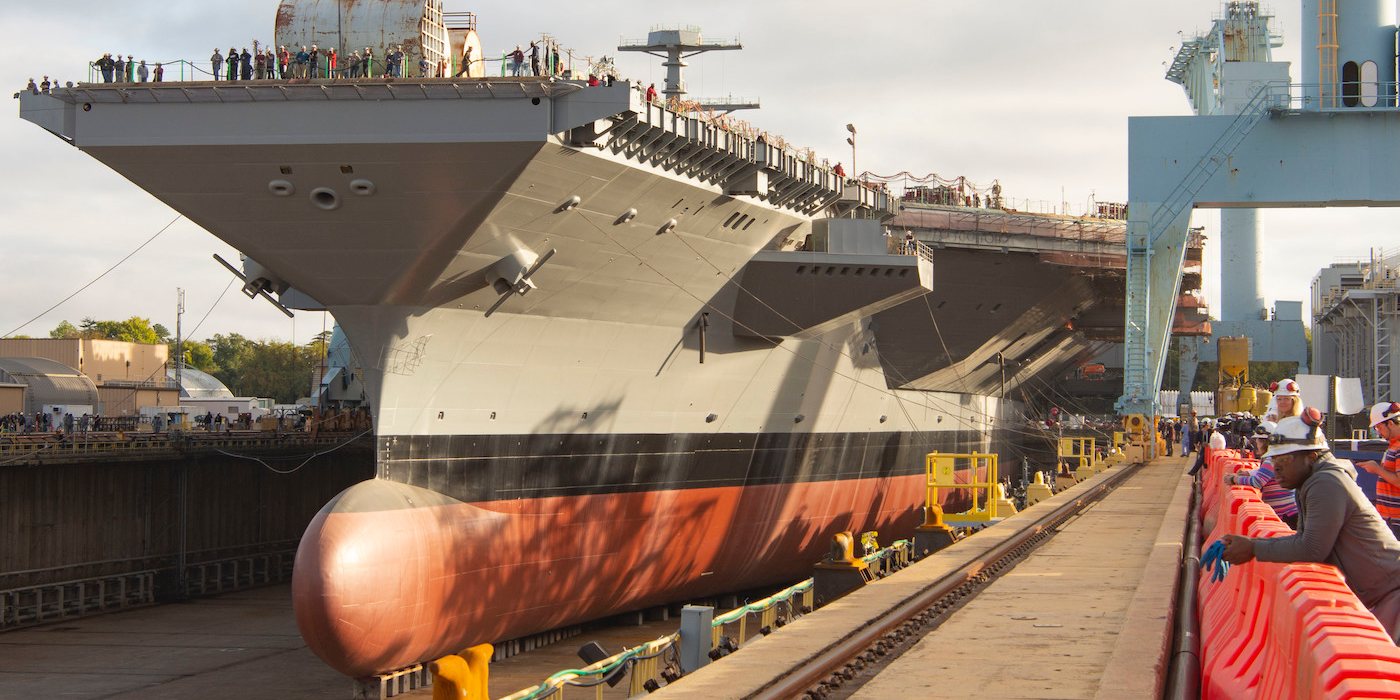- While the first-in-class aircraft carrier USS Gerald R. Ford faces lingering problems, the second Ford-class carrier, the USS John F. Kennedy, hit a milestone ahead of schedule.
- The Kennedy’s progress is due in part to its status as second in the class, allowing its builders and crew to glean know-how picked up by the Ford’s designers and sailors.
- Visit Business Insider’s homepage for more stories.
Days after the first-in-class aircraft carrier USS Gerald R. Ford sailed out of a “challenging” post-shakedown work period that was extended three months because of maintenance problems, the dry dock holding the second Ford-class carrier, the USS John F. Kennedy, was flooded, launching the carrier three months early.
The Kennedy’s builders and crew have gotten a boost from the Ford, according to the ship’s commanding officer, Capt. Todd Marzano.
“We are definitely benefiting from being the second aircraft carrier in the class,” Marzano told Business Insider last week. “We’re leveraging their lessons learned, which has helped not only from the construction side but from our sailor training.”
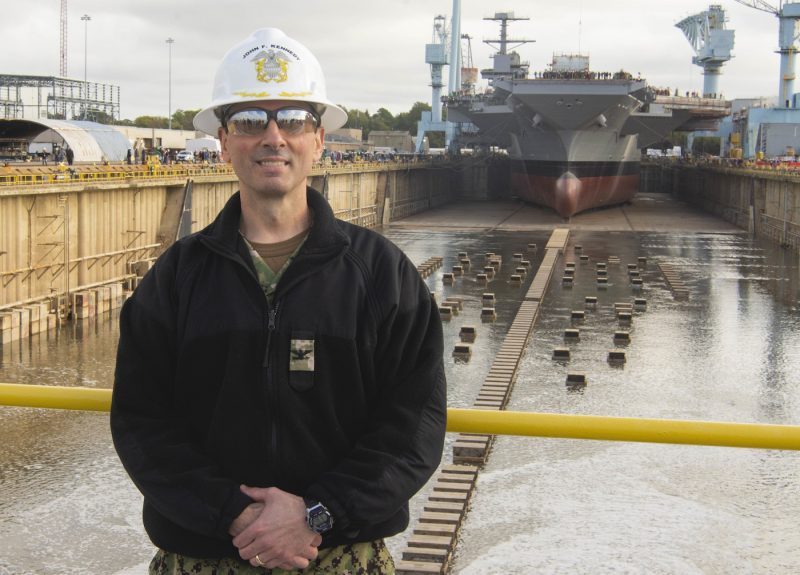
A graduate of Naval Fighter Weapons School, or Top Gun, Marzano has gone to sea aboard Kitty Hawk-, Nimitz-, and Ford-class carriers, serving as a fighter squadron commander as well as executive officer and commanding officer of the carrier itself.
At a ceremony in May, Marzano recalled driving past the Ford as construction began in late 2015 and thinking that "some lucky captain" would get to be its first skipper. In a mast-stepping ceremony after that speech, he put his first set of gold aviator's wings under the 650-ton island as it was lowered onto the flight deck.
That "signified my commitment as the CO of the ship to ensure ... that I'm going make sure that the crew is ready to do their job and operate the ship when we take it out to sea," Marzano said. "So it meant a lot to me. This is definitely a pinnacle tour in my career."
Getting hands-on
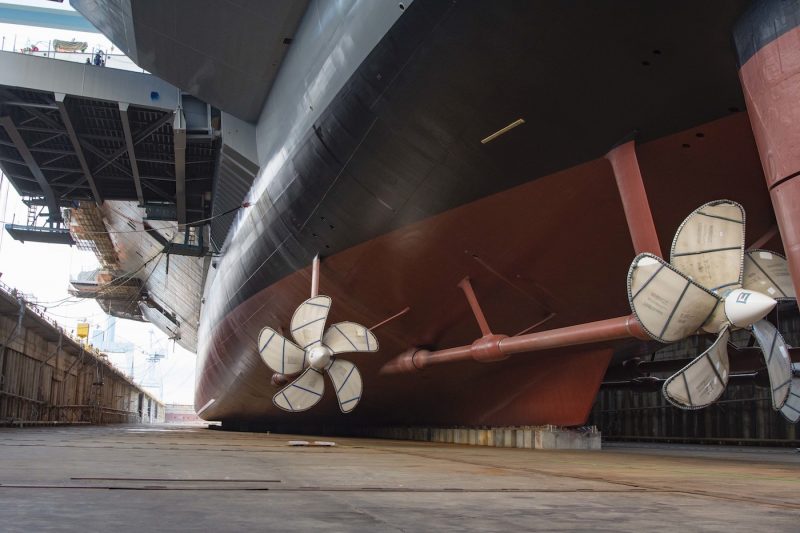
Marzano assumed command of the Kennedy, designated CVN-79, on October 1, at a ceremony attended by the carrier's first 43 sailors, who were handpicked for the assignment.
"We officially stood up the command on October 1, and as of today we have just over 150 crew members on board, and that number just continues to grow daily," Marzano said on November 19. "The current focus since they've shown up is to create a solid foundation, which means getting our programs, our procedures established. We're also focusing on a lot of training and, most importantly, developing a healthy culture throughout all levels of the command."
Marzano added that "some of the sailors on the Ford have now been transferred over to our ship, so we can benefit from their knowledge ... gained on their tour."
The Ford-class carriers - the Ford, the Kennedy, the Enterprise, and the unnamed CVN-81 - are or will be equipped with new technology the Navy believes will keep them effective for decades to come. The Ford's first sailors, with months or even years of hands-on experience with that tech, were creating "basically instructions on how to operate this ship with its systems and its new design," as one sailor put it.
"Now we're going to benefit from that, and they can help train our new sailors," Marzano said.
'Sort of like a Lego build'
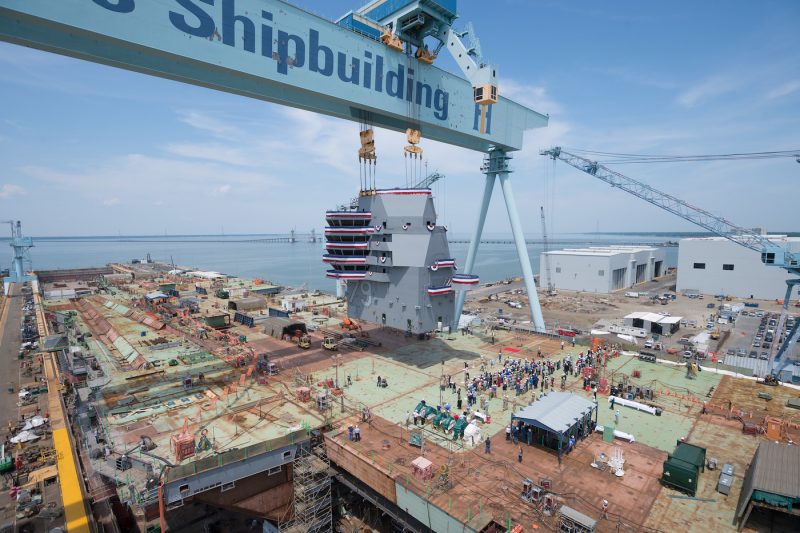
In addition to changing or excluding some features, the Navy and the carrier's builder, Huntington Ingalls Industries, have made changes to the Kennedy's build strategy to control costs and stay on schedule.
The Ford was being built as it was being designed, according to Mike Butler, Huntington Ingalls' program manager for the Kennedy. But the Kennedy had a complete model, saving time.
"Every piece of pipe, every cable, every other piece of equipment was loaded in a three-dimensional product model, and that gave us the ability, for example, [to do] hole cuts, where you have a bulkhead or a deck and you have to cut a hole in it for a pipe to go through or an electrical cable," Butler told Business Insider on Friday.
On Nimitz-class carriers, "prior to the product model," Butler said, "we probably cut 75% of those holes on ship once we ran the pipe and saw where it went through the bulkhead."
There was "much less" cutting on ship on the Ford because of the product model, Butler said. But on the Kennedy, "with the complete product model, I virtually cut 100% of all of those hole cuts in the ship."
"While the shop was still fabricating the deck plates and bulkhead panels, they could go in and robotically locate and cut all of those holes in those structural members while it was still in the shop environment, which is a big deal because there are probably close to 100,000 holes that go through decks and bulkheads that have to be cut," Butler added.
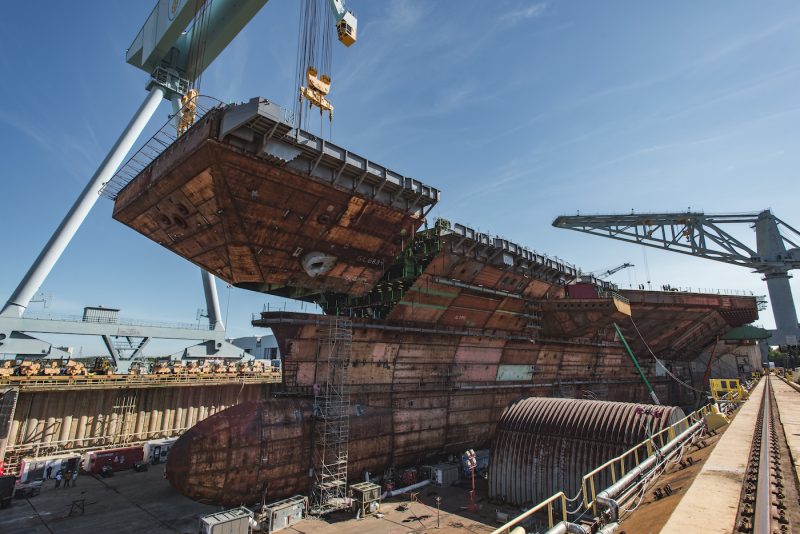
The design and planning documents for the Kennedy were updated as work continued on the Ford. But the biggest change was in how the second Ford-class carrier was actually put together, Butler said.
About 1,100 structural boxes are built to assemble the carrier, each outfitted with components like wiring. Those boxes are put together into larger sections called super lifts, which are outfitted further. The carrier is then assembled from those super lifts - "sort of like a Lego build," Butler said.
On the Kennedy, "particularly early in the program, we did a lot more outfitting," Butler said. "We built larger boxes in our steel fabrication division. We brought those to our final assembly plant. We built larger super lifts than we did on [the Ford] in some areas, and we put more outfitting in a lot of those super lifts, particularly early in the program.
"So we ended up with less lifts into the dock and many cases of larger super lifts that had more outfitting ... which drives your cost down as well," Butler added.
"We're definitely aggressively seeking the lessons learned and then applying them to the Kennedy, and we're already seeing benefits of that. Construction progress has gone much more efficiently," Marzano said. "So both on the construction and the level-of-knowledge side for the sailors, that's paying off. Being the second in class is definitely easier in that regard for sure."
Cheaper, faster, and better
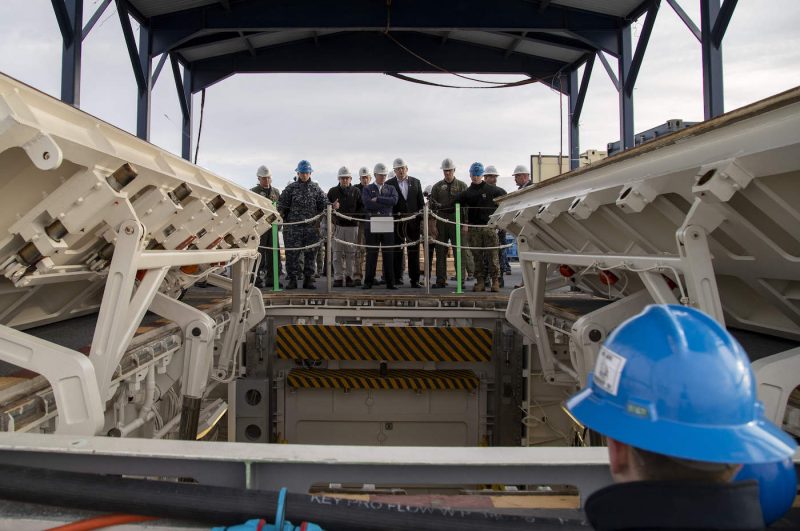
The Ford's marquee features have been among the most troublesome, particularly the advanced weapons elevators, drawing congressional scrutiny and the ire of former Navy Secretary Richard Spencer, who excoriated Huntington Ingalls, saying last month that the shipbuilder had "no idea" what it was doing.
Those electromagnetically powered elevators are supposed to carry more ordnance faster - up to 24,000 pounds at 150 feet a minute over Nimitz-class elevators' 10,500 pounds at 100 feet a minute - from storage magazines deep in the hull. But just four of the Ford's 11 elevators have been certified and turned over to the crew.
Those new elevators have new electrical and mechanical technology and are "a lot more complex than traditional weapons elevators," with "a lot tighter tolerances because of that," Butler said.
Work on the Kennedy's elevators was delayed to incorporate lessons from the Ford, Butler added.
"A lot of the areas where they've had issues that they've had to resolve we've been able to hold back, get those issues resolved, change the design, change the work documents," Butler said. "That allows us now to go in and do that work the first time with those lessons learned already."
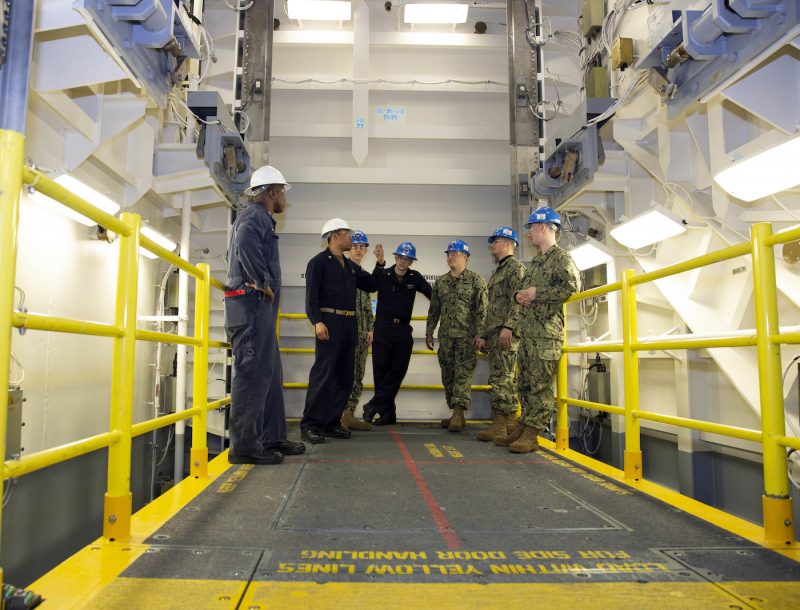
Those pauses didn't affect work on the hull and parts of the ship exposed to seawater, allowing it to be launched ahead of schedule in October, Butler said.
In addition to being ahead of schedule, the Kennedy was also 5% more complete than the Ford at the time of its launch, according to James Geurts, the Navy's acquisitions chief.
Like Marzano's crew, Butler's team has also benefitted from an influx of personnel from the Ford.
Butler said that "working through all those different technical issues" on the Ford, they had "developed a set of industry experts at the shipyard, and our design, manufacturing, construction, and testing of those elevators."
"Now that expert team is beginning to migrate to my ship, bringing those people and those lessons learned, working with my team," Butler added, "so that we've got people on the deck plate who've been through these elevators, helping us modify our build plan to improve that process."
Butler declined to comment on Spencer's criticisms, saying he was "laser-focused" the Kennedy.
"Morale is great. We know we've worked through a lot of the first-in-class problems," Butler added. "We are building this ship cheaper; we're building the ship faster. And to us that is showing that first-of-class-to-second-of-class improvement is exactly what we thought it would be."
